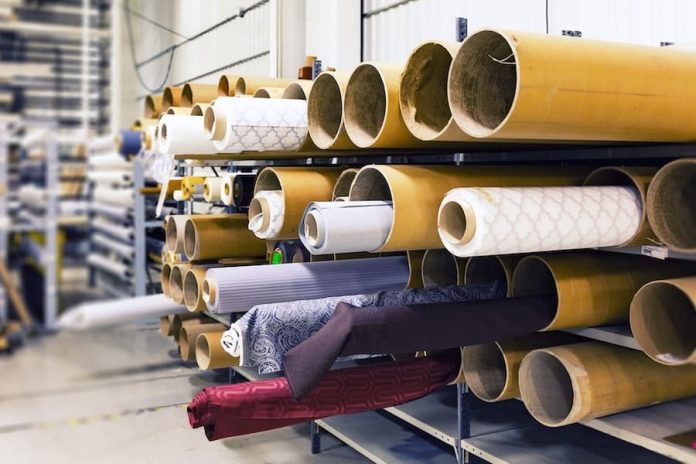In the world of textile manufacturing, the sizing process plays a crucial role in enhancing the performance and appearance of fabrics. While it may not be the most well-known step in the textile production chain, it is undoubtedly one of the most important. In this SEO blog post, we’ll delve into the sizing process, exploring its key steps and highlighting the numerous benefits it brings to the textile industry.
What Is Sizing In Textile Production?
Sizing, also known as warp sizing or slashing, is a preparatory process that occurs after weaving and before dyeing or finishing. Its primary purpose is to improve the weaving process and end product quality by adding a protective layer to the warp yarns.
Key Steps In The Sizing Process:
Preparation of Sizing Solution:
The sizing process begins with the careful preparation of a sizing solution. This solution typically consists of substances like starch, gelatin, or polyvinyl alcohol, depending on the specific requirements of the fabric being produced. Manufacturers adjust the composition, concentration, and temperature of the solution to achieve the desired viscosity and consistency. The precise formulation of the sizing solution is critical, as it directly affects the quality of the sized yarns and the final fabric.
Application of Sizing:
Once the sizing solution is ready, it is applied to the warp yarns. This step can be accomplished using various methods, including immersion, squeeze, or spray. The goal is to evenly coat each warp yarn with the sizing material. An even application is crucial to ensure uniformity in the fabric’s properties and performance. The sizing solution acts as a protective layer, reducing friction and abrasion during the weaving process, which in turn minimizes yarn breakage and enhances the durability of the fabric.
Drying:
After the sizing material is applied to the yarns, the next step is drying. Proper drying is essential to remove excess moisture from the yarns and to set the sizing material effectively. Drying methods may include hot air drying, infrared radiation, or microwave technology, depending on the equipment available in the textile mill. Adequate drying prevents issues such as mildew growth and ensures that the sizing adheres well to the yarns. The temperature and duration of the drying process must be carefully controlled to avoid damaging the yarns or the sizing material.
Warp Beaming:
Following drying, the sized yarns are wound onto warp beams. These warp beams are then loaded onto the weaving loom. Warp beaming is a critical step in preparing the warp yarns for the weaving process. It ensures that the yarns are properly aligned and under the appropriate tension, which is essential for achieving consistent fabric characteristics. The warp beams are designed to feed the yarns smoothly and evenly into the weaving machine, preventing snags, tangles, or uneven tension that could lead to defects in the final fabric.
Benefits Of Sizing In Textile Production:
- Improved Weaving Efficiency: Sizing significantly enhances the efficiency of the weaving process. By applying a protective layer to the warp yarns, sizing reduces friction and abrasion during weaving. This reduction in friction leads to fewer yarn breaks, resulting in less downtime for machine stoppages and fewer interruptions in the production process. Improved weaving efficiency translates to higher productivity and cost savings for textile manufacturers.
- Enhanced Fabric Quality: Sizing plays a pivotal role in improving the overall quality of the fabric. By reducing yarn slippage and warp yarn breakage, it ensures that the woven fabric has a smoother surface and fewer defects. This results in a fabric that not only looks better but also has improved strength and durability. As a result, the fabric is more likely to meet the stringent quality standards required by the industry and consumers.
- Cost Reduction: The benefits of sizing extend to cost reduction. As mentioned earlier, the reduction in yarn breaks and weaving interruptions leads to lower production costs. Fewer machine stoppages mean less maintenance and fewer replacement parts required. Moreover, the increased weaving efficiency allows manufacturers to produce more fabric in less time, optimizing resource utilization and reducing labor costs.
- Consistent Fabric Characteristics: Sizing ensures that the fabric’s characteristics, such as width, density, and appearance, remain consistent throughout the production process. By providing uniform yarn tension and preventing variations, sizing contributes to the predictable quality of the final fabric. This consistency is crucial, especially when producing textiles for applications where precision and uniformity are paramount, such as in the automotive or aerospace industries.
- Ease of Further Processing: Sized fabrics are easier to handle during subsequent processes, such as dyeing and finishing. The protective layer of sizing material helps the fabric maintain its structural integrity and shape, reducing the risk of distortion or damage during these processes. This ease of handling not only simplifies downstream operations but also ensures that the final fabric retains its intended characteristics and appearance.
Conclusion:
The sizing process may be lesser-known compared to other stages in textile production, but its impact on the quality and efficiency of the final product cannot be overstated. By understanding the key steps and benefits of sizing, manufacturers can optimize their production processes and deliver high-quality textiles to consumers. Whether you’re a textile industry professional or simply curious about the intricacies of fabric manufacturing, the sizing process is a fascinating aspect of this multifaceted industry.


